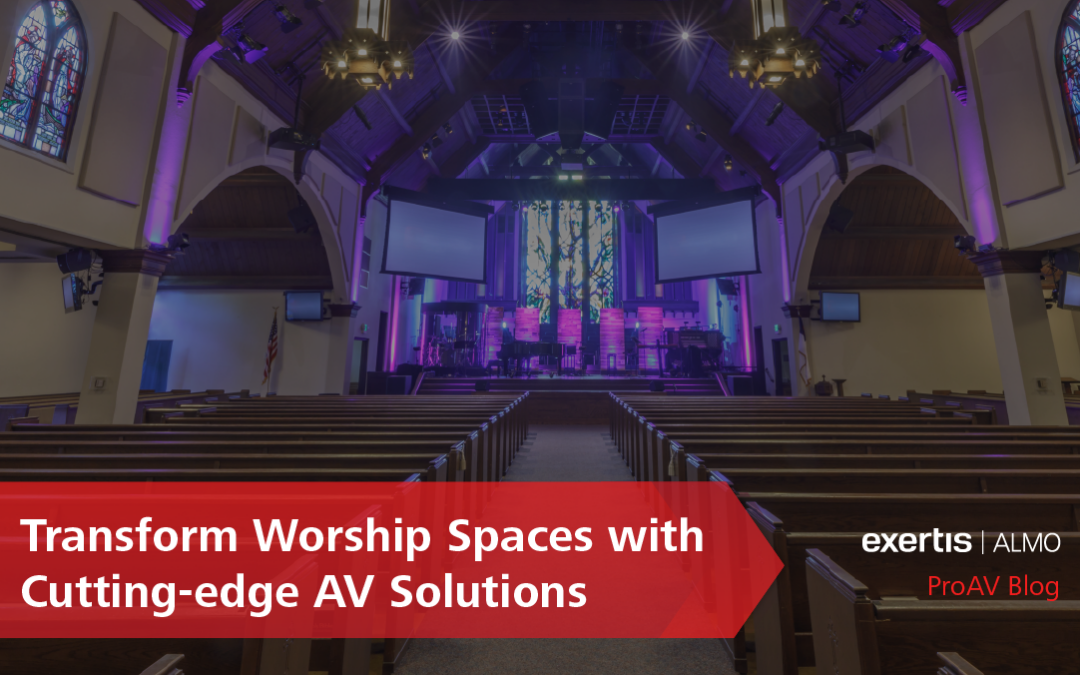In the dynamic House of Worship market, the fusion of spoken word, live music, and community events offers unique opportunities for professional audio-visual integrators to elevate devotional spaces and design enriching worship experiences with comprehensive, cutting-edge AV solutions. You can rely on Exertis Almo as a resource for the technology involved in designing systems that engage every member of a congregation – whether they are in the sanctuary, in overflow rooms, or participating remotely. These solutions also enable a broader reach for the worship organization through social media and video streaming, which can expand their resources for effective fundraising – fostering a stronger, more connected community.
From live streaming to artificial intelligence, technology innovations are reshaping AV solutions for worship spaces. Adapting to these tech trends ensures that your worship projects remain relevant and technologically advanced.
Let’s Explore 7 AV Technologies that are Uplifting the HoW Market:
 1. Video and Live Streaming – Expand Community Outreach
1. Video and Live Streaming – Expand Community Outreach
With the paradigm shift towards remote ministry and hybrid congregations over the last few years, AV technology has become a bridge – connecting dispersed communities and providing comfort with familiar messages. As houses of worship embrace video technology in a new way, they can leverage live-streaming technology to reach a broader audience and enable congregants to participate in services from anywhere.
Video streaming cameras range from basic PTZ cameras to advanced tracking and framing capabilities. Unattended cameras can be discreetly installed in hard-to-reach places, covering any size of worship space with powerful zoom for frame-filling close-ups. To find out how bandwidth needs have expanded for worship spaces as a result of this trend toward video streaming, check out Rob Voorhees’ blog.
 2. Sound, Lighting, and Imagery – Uplift with Immersive Experiences
2. Sound, Lighting, and Imagery – Uplift with Immersive Experiences
AV technology, including advanced sound systems and high-quality projectors, is enabling the creation of more immersive worship experiences. Visual enhancements, dynamic lighting, and surround sound all contribute to a more engaging atmosphere.
Projection mapping techniques can also be employed to transform the physical space of the worship area. This allows for dynamic visual storytelling and thematic enhancements
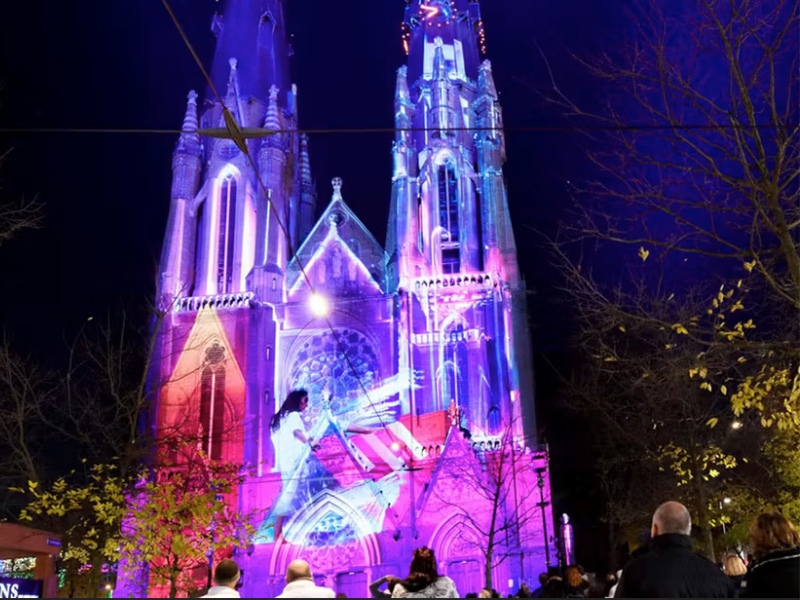
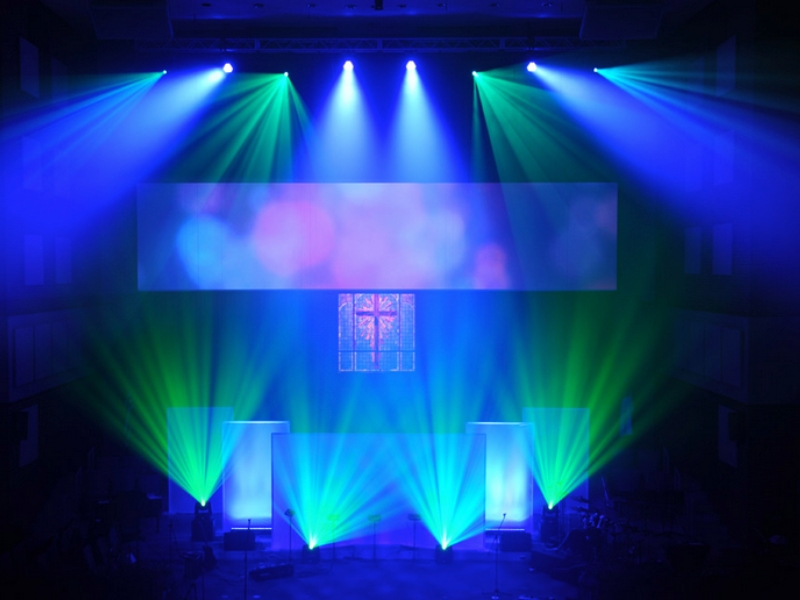
3. Digital Displays and Signage – Deliver Awe-Inspiring Visuals
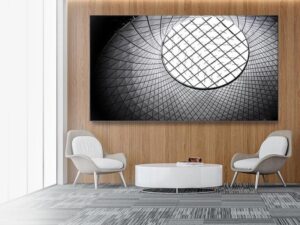 Digital signage is increasingly used for displaying announcements, song lyrics, and other information. This dynamic form of communication enhances engagement and keeps congregants informed. Overall, digital signage is an excellent way to facilitate community engagement and share updates, enhancing the overall worship experience.
Digital signage is increasingly used for displaying announcements, song lyrics, and other information. This dynamic form of communication enhances engagement and keeps congregants informed. Overall, digital signage is an excellent way to facilitate community engagement and share updates, enhancing the overall worship experience.
Direct View LED all-in-one displays, such as Samsung’s The Wall, provide integrators with a drastically improved installation process, and new avenues to create unparalleled visual statements in common areas as well as behind the pulpit or on the stage inside the main sanctuary.
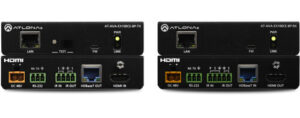 Effortlessly share messages throughout the facility in stunning 4K resolution with top connectivity solutions.
Effortlessly share messages throughout the facility in stunning 4K resolution with top connectivity solutions.
4. Interactive Displays and Collaboration Tools for Hybrid Congregations
 Collaboration tools and video conferencing solutions are integrated into AV setups, facilitating remote participation for members who are unable to attend physically.
Collaboration tools and video conferencing solutions are integrated into AV setups, facilitating remote participation for members who are unable to attend physically.
Interactive displays and touchscreens, like Hisense’s GoBoard, are also being used for teaching and interactive worship sessions. This allows for a more dynamic and interactional experience for congregants, especially in educational settings.
5. Accessibility Features – Ensure Everyone is Included
Houses of worship are implementing various accessibility features, such as hearing loop systems and closed captioning services, to ensure that services are accessible to individuals with hearing impairments. From incorporating additional digital signage into the space to upgrading audio systems and features, accessibility is a key factor in fostering an environment where all members of the community can participate with ease.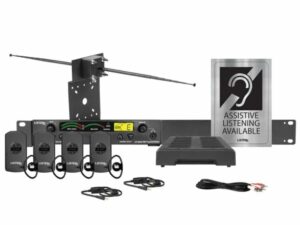
The spoken word is the most fundamental part of a worship service. Including support for hearing-impaired members with an assistive listening system can help address regulatory compliance, increase inclusivity, and expand reach so the message can be heard by all.
6. Podcasting and Social Media Content – Amplify the Message
 Podcasting studios within houses of worship have become more common, enabling the creation of audio content for a broader audience beyond those attending in-person. Acting as a supplement to traditional worship, podcasts have become a powerful tool for sharing discussions and teachings with a global audience, extending beyond the physical congregation.
Podcasting studios within houses of worship have become more common, enabling the creation of audio content for a broader audience beyond those attending in-person. Acting as a supplement to traditional worship, podcasts have become a powerful tool for sharing discussions and teachings with a global audience, extending beyond the physical congregation.
Through podcasts and social media outreach, houses of worship can share and extend their influence and inclusivity, creating a sense of unity among listeners, regardless of their location.
7. Virtual Reality and Augmented Reality – Embrace the Future
 While still emerging, some houses of worship are exploring the use of Virtual Reality (VR) and Augmented Reality (AR) technologies to create unique and immersive spiritual experiences, transcending traditional boundaries. By embracing this new technology in the House of Worship space, spirituality can become more accessible and adaptable to the evolving preferences of congregations.
While still emerging, some houses of worship are exploring the use of Virtual Reality (VR) and Augmented Reality (AR) technologies to create unique and immersive spiritual experiences, transcending traditional boundaries. By embracing this new technology in the House of Worship space, spirituality can become more accessible and adaptable to the evolving preferences of congregations.
We hope you’re inspired by the potential of AV technologies playing an integral role in designing immersive worship experiences, promoting accessibility, and adapting to the changing needs of worshipers. Exertis Almo is committed to assisting our integrator partners in optimizing technology for all your House of Worship projects. Whether it involves a simple upgrade or a complete redesign, our expertise lies in the seamless integration of audio, visual, and streaming capabilities to elevate every worship space.
Contact your Exertis Almo representative for assistance in designing your next AV system or selecting the optimal audiovisual equipment for your project.

